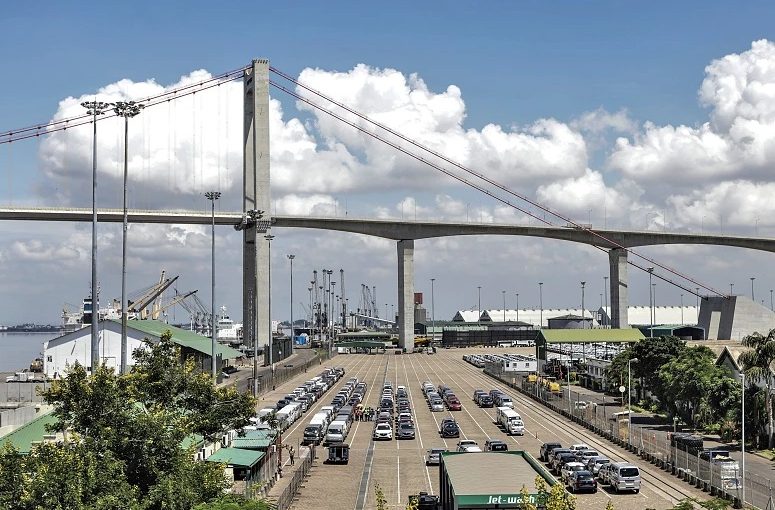Mozambique, World Bank partnership gains momentum as President Chapo meets Ajay Banga in ...
Mozambique port critical to chrome exports gets upgraded railway link

File photo: Lusa
The biggest port in Mozambique that’s become a key hub for global chrome exports will upgrade a railway link, bolstering a planned $2 billion capacity expansion.
The African Development Bank is financing the purchase of $40 million of locomotives and wagons and another $30 million is under consideration from the Development Bank of Southern Africa for improvements on the line that connects the Port of Maputo with South Africa, according to the AfDB. The DBSA declined to comment.
The funding will help switch millions of tons of minerals such as chrome that are transported by truck to rail, reducing costs and cutting road traffic by as much as 40%, Cesar Mba Mbogo, the AfDB’s country manager, said in an interview.
Neighbouring South Africa’s port and rail volumes have collapsed because of corruption and theft, raising the appeal for exporters to use Maputo instead. As a result, the reliance on trucks by chrome, iron-ore and coal miners to move their products to port has led to border logjams that stretch as long as 35 kilometres (22 miles) as volumes continue to rise.
Maputo handled an average of 1,145 daily in January, a monthly record, according to data from the port concessionaire. The port’s single busiest day yet was in October, when it processed 1,728 trucks, it said.
Freight costs are about 40% more a ton by truck than by rail, according to Minerals Council South Africa, a mining-lobby group that estimates that more than half of South Africa’s chrome travels via Maputo. Glencore Plc’s Merafe Resources Ltd. joint venture in the country estimates road transport is used for about 70% of its exports.
Chrome concentration
South Africa accounts for more than 60% of global chrome ore supplies and about one-fifth of global production of ferrochrome, a more processed form that’s used to make stainless steel, according to Luke Nickels, senior analyst at CRU in London. Because of such a supply concentration, buyers bear the higher trucking costs.
“Given the importance of South African chrome ore in the global supply chain, any interruption to the flow of chrome ore from South Africa has wide-reaching effects,” he said by email. “Without reliable logistic infrastructure, buyers are going to have to be prepared to pay higher premiums for timely shipments of chrome ore.”
A group including DP World Ltd. and Mozambique’s Portos e Caminhos de Ferro de Moçambique — or CFM — will this week sign a deal with the government to extend its port concession to 2058. The concessionaires will spend more than $2 billion to expand the port capacity to 54 million tons a year from 37 million tons.
CFM is also almost doubling the capacity of the railway link from the South African border to Maputo. Mozambican Transport and Communications Minister Mateus Magala said at least 60% to 70% of cargo should arrive by train.
“The figure should be opposite,” he said in an interview in Maputo. “We expect in the next three months to see some policy-driven model shifts.”
A key hurdle to getting minerals off trucks and onto trains is that CFM’s operations end at the South African border, said Osório Lucas, chief executive officer at the Maputo Port Development Co.
“South Africa will have to play ball,” he said in an interview.












Leave a Reply
Be the First to Comment!
You must be logged in to post a comment.
You must be logged in to post a comment.